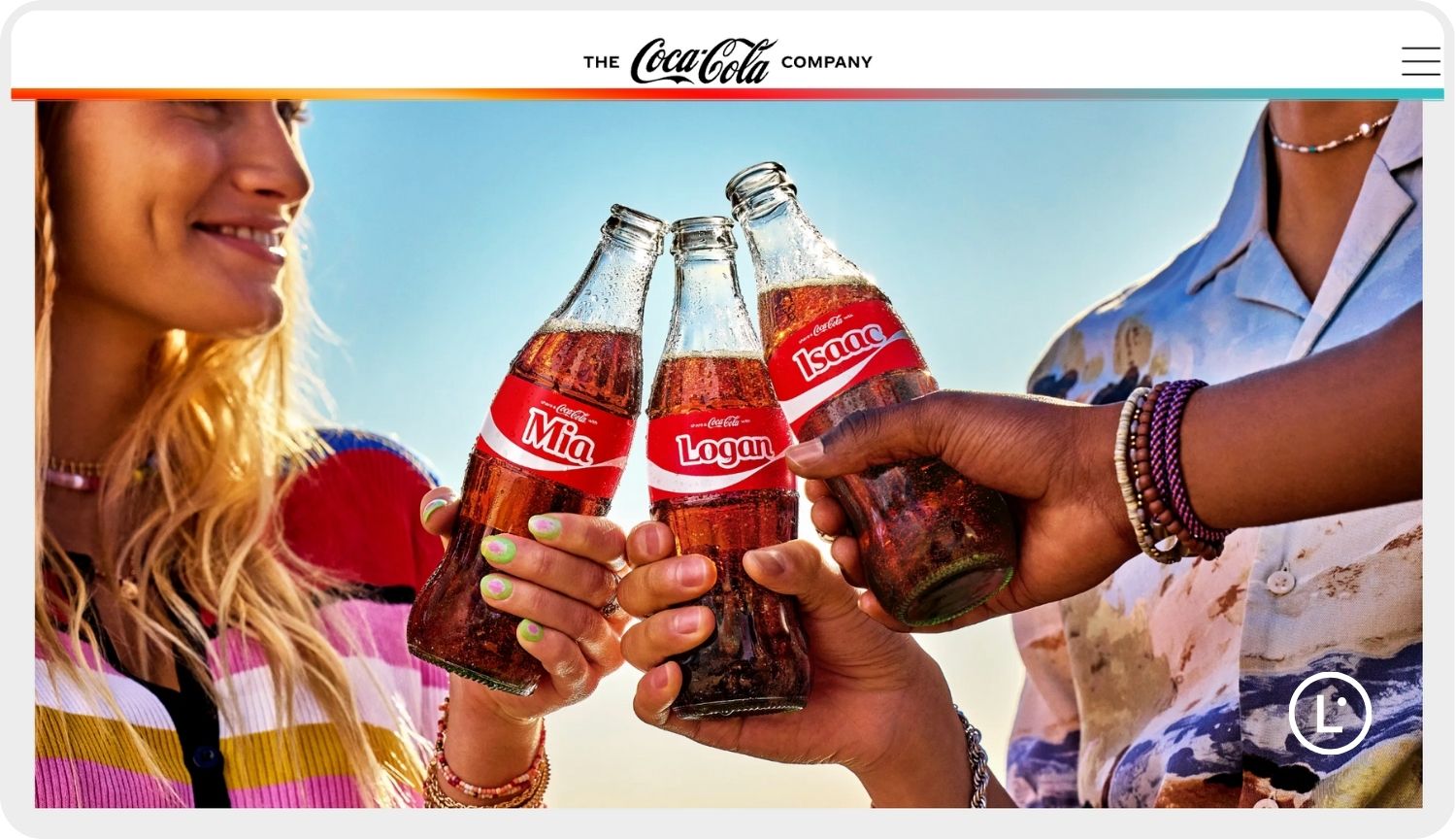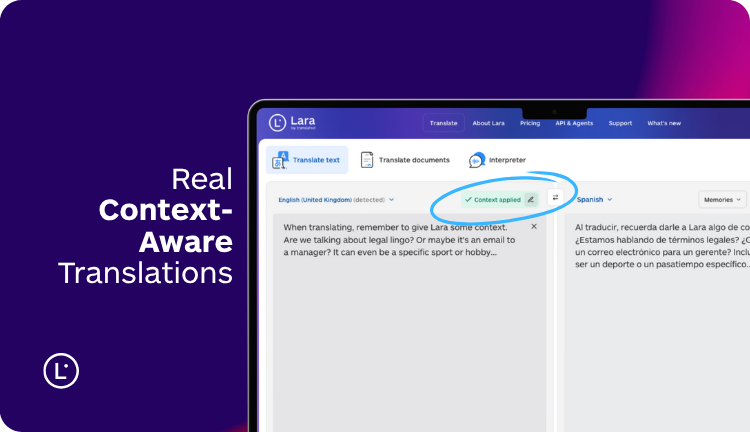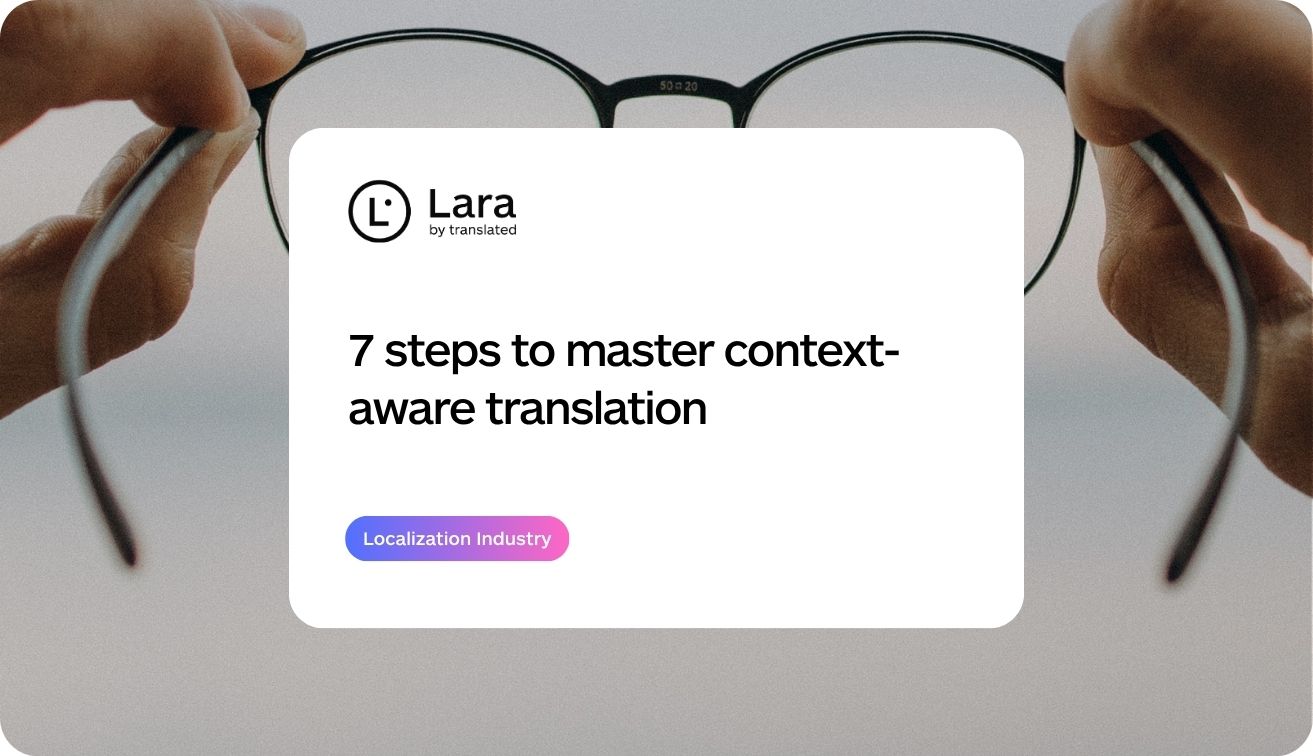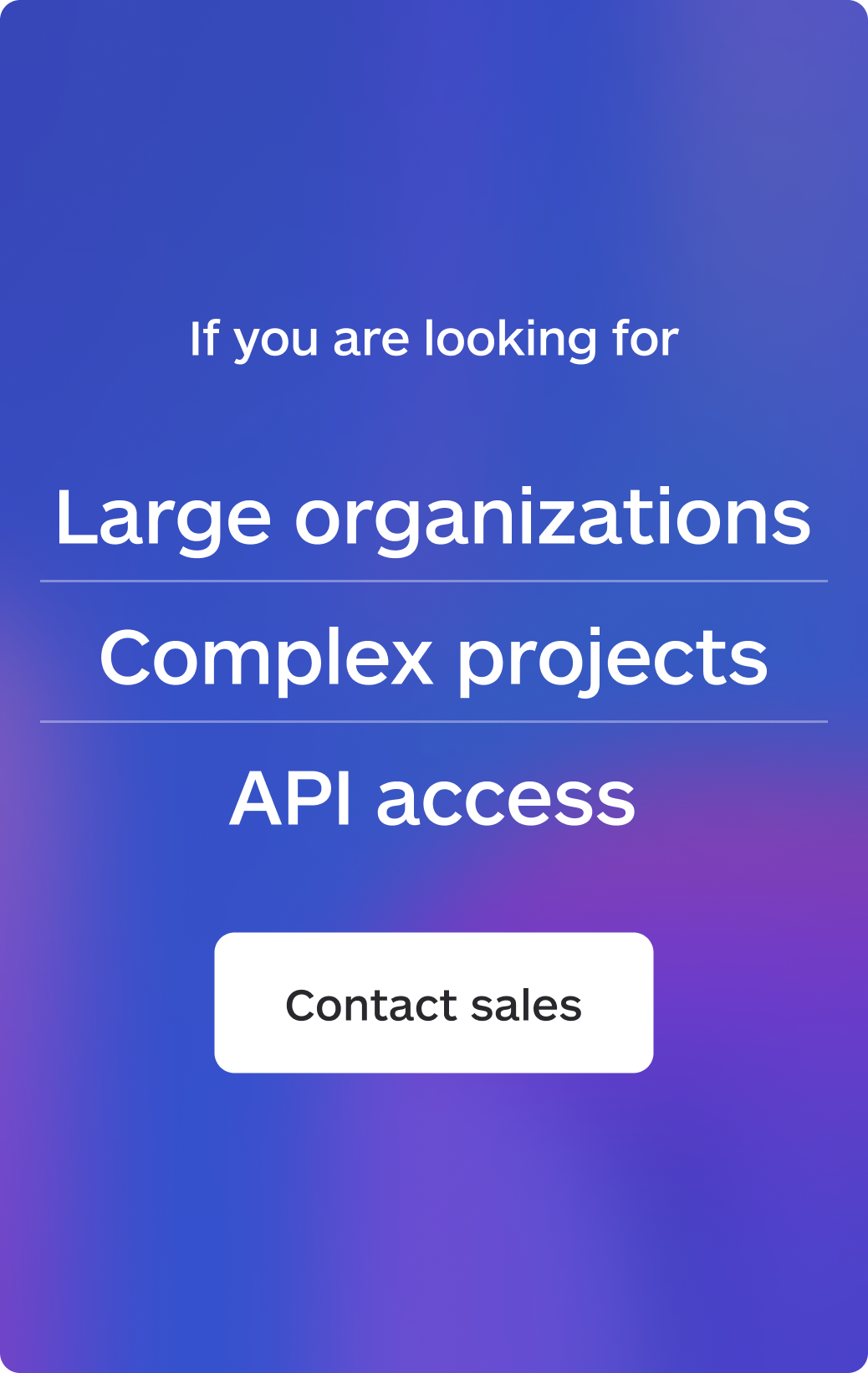When your content crosses borders, context becomes as important as accuracy: that’s where context-aware translation makes the difference. The difference between a message that resonates and one that falls flat – or worse, offends – often lies in context-aware translation. But what is context-aware translation? This approach considers not just linguistic accuracy, but the cultural, visual, and situational elements that give language its true meaning.
Studies show that consumers are 76% more likely to purchase products with information in their native language, but the quality of that translation matters tremendously. A context-aware translation approach ensures your message maintains its impact while respecting cultural nuances across global markets.
This comprehensive guide outlines seven essential steps to implement context-aware translation in your global communications strategy, helping you avoid costly mistakes and build stronger connections with international audiences.
TL;DR
|
When your content crosses borders, a literal translation is rarely enough. Context-aware translation helps you respect local culture, avoid costly missteps, and speak in a way that feels natural to real people. The result is stronger trust, higher engagement, and better performance from every campaign you run in international markets.
What Is Context-Aware Translation? A 7 Step Guide For Global Brands
Context-aware translation is a translation approach that adapts text based on cultural, visual, and situational context, not only word meaning. It considers tone, audience, layout, and local norms so the message feels natural, respectful, and persuasive in each market.
This guide explains what context-aware translation is and how to implement it in 7 steps for global communications.
How does cultural context shape translation?
Cultural context in translation is the foundation of effective cross-cultural communication. It encompasses the shared beliefs, values, customs, behaviors, and artifacts that characterize a group or society. When translating content, understanding these elements is crucial because language is deeply embedded in culture.
Many businesses learn this lesson the hard way. Consider how HSBC Bank had to rebrand its entire global marketing campaign at a cost of $10 million when its tagline “Assume Nothing” was mistranslated as “Do Nothing” in multiple languages. This costly error occurred because translators lacked sufficient cultural context in translation to capture the nuanced meaning of the original phrase.
Cultural context influences everything from humor and metaphors to color associations and visual symbols. A gesture considered positive in one culture might be offensive in another. For example, the thumbs-up sign is generally positive in Western cultures but can be highly offensive in parts of the Middle East and West Africa.
Effective cultural context in translation requires understanding:
- Social norms and etiquette
- Local taboos and sensitive topics
- Humor and entertainment preferences
- Family structures and relationship dynamics
- Religious and spiritual beliefs
- Business and professional customs
Before beginning any translation project, conduct thorough localization market research to understand the cultural landscape of your target market. This research serves as the foundation for all subsequent translation decisions, helping you identify potential cultural pitfalls and opportunities for deeper connection.
How do you implement context-aware translation in 7 steps?
First of all, by using the right tools!

Got it? Good! Now you can go on with the guide 😉
Step 1: Conduct comprehensive source content analysis
The journey to effective context-aware translation begins with a thorough analysis of your source content. This critical first step helps identify elements that may require special attention during translation.

Start by examining:
- Cultural references and idioms
- Humor and wordplay
- Industry jargon and terminology
- Visual elements and their cultural significance
- Metaphors and analogies
- Tone and formality level
For each element, ask: “Will this translate meaningfully to the target culture?” For instance, sports metaphors common in American business communications (like “touchdown” or “home run”) may not resonate in countries where these sports aren’t popular.
Create a content inventory identifying all elements requiring cultural adaptation. This inventory serves as a roadmap for translators, helping them understand which parts of the content need special attention beyond literal translation.
Step 2: Create detailed translation briefs with context
Translators need more than just text to produce effective translations. Provide comprehensive briefs that explain the purpose, audience, and context of your content.
A thorough translation brief should include:
- Background information on your company and brand voice
- Target audience demographics and psychographics
- Content objectives and desired audience actions
- Visual context (screenshots, mockups, or product images)
- Explanation of industry-specific terminology
- Examples of previous successful translations
When translating software interfaces or websites, provide screenshots showing where each text string appears. This visual context helps translators understand space constraints and functional context that influence translation choices.
For example, the English word “save” could translate differently depending on whether it refers to saving money, saving a file, or saving something for later. Without proper context, translators might choose an inappropriate translation that confuses users.
Step 3: Develop comprehensive glossaries and style guides
Consistency is crucial for professional translations. Create target-language glossaries and style guides to ensure translators maintain consistent terminology and tone across all materials.
Your glossary should include:
- Key terms and their approved translations
- Terms that should remain untranslated (such as product names)
- Acronyms and abbreviations with explanations
- Industry-specific terminology
Style guides should address:
- Tone and voice (formal vs. casual)
- Formatting preferences (dates, times, currencies)
- Grammar and punctuation conventions
- Guidelines for addressing the reader
- Regional dialect preferences
These resources ensure translations remain consistent even when working with multiple translators or across different projects over time. They also help preserve your brand voice while adapting appropriately to cultural expectations.
Step 4: Implement visual localization strategies
Visual localization is often overlooked but is equally important as text translation. Images, colors, layouts, and design elements all carry cultural meaning that may need adaptation for different markets.
Consider these aspects of visual localization:
- Images of people should reflect the diversity of your target market
- Hand gestures and body language should be appropriate for the culture
- Colors should align with cultural associations and meanings
- Page layout may need adjustment for languages that read right-to-left
- Graphics containing text require translation or redesign
For example, a website designed for left-to-right languages like English will need significant layout changes for right-to-left languages like Arabic or Hebrew. Similarly, images that work well in Western markets may need adjustment for markets with different modesty standards or cultural norms.

Translation with cultural and visual context examples can be found in successful global campaigns like Coca-Cola’s “Share a Coke” initiative. The campaign was localized for different markets by using locally popular names on bottles and adapting visual elements to reflect local culture, resulting in increased sales across diverse markets.
Step 5: Utilize technology for context preservation
Modern translation technologies help maintain context throughout the translation process. Translation management systems (TMS) provide contextual information to translators and ensure consistency across projects.
Look for technology solutions that offer:
- In-context translation capabilities (showing translators exactly where and how text will appear)
- Integration with design tools for visual context
- Translation memory to maintain consistency
- Terminology management features
- Collaboration tools for translator questions and clarifications
Lara Translate exemplifies this approach with its context-aware translation capabilities. It enables businesses and language professionals (or LSPs) to deliver superior quality translations, strengthening their ability to operate in underrepresented but rapidly growing regions. For the most up-to-date information on supported languages, consult the documentation.
Step 6: Work with culturally-aware translators
Technology alone isn’t enough—human expertise remains essential for truly effective context-aware translation. Work with translators who are not only linguistically skilled but also culturally knowledgeable about both source and target markets.
The best translators for context-aware translation will:
- Be native speakers of the target language
- Have lived in the target culture
- Understand the subject matter of your content
- Have experience with similar types of translation projects
- Ask thoughtful questions about context when needed
Consider implementing a transcreation approach rather than simple translation for marketing materials. Transcreation gives translators the freedom to recreate the emotional impact and intent of the original message rather than just translating the words.
Different industries may require specialized approaches to cultural context in translation, as illustrated in various industry examples and localization strategies with Lara Translate.
Step 7: Implement cultural review and testing
Even with excellent translation, cultural review is essential to catch subtle issues that might have been missed. Implement a review process with native speakers from the target market who can evaluate both linguistic accuracy and cultural appropriateness.
Cultural review should assess:
- Appropriateness of metaphors and examples
- Effectiveness of humor (if used)
- Sensitivity to local customs and taboos
- Authenticity of voice and tone
- Accuracy of cultural references
For digital products, conduct usability testing with native users from the target market. This testing can reveal issues with everything from button text to overall user flow that might be culturally specific.
Remember that different locales may use the same language differently. Understanding the distinction between a language and a locale is crucial for precise targeting, as explained in this article about what is a locale and how it differs from language.
What is the business impact of context-aware translation?
Implementing context-aware translation delivers significant business benefits beyond simple comprehension. When done correctly, it:
- Builds trust with local audiences by showing respect for their culture
- Prevents costly marketing mistakes and potential PR crises
- Increases conversion rates by using culturally appropriate persuasion techniques
- Improves user experience for products and services
- Enhances brand reputation as a truly global company
Companies implementing thorough context-aware translation often see measurable improvements in key performance indicators such as:
- Increased time spent on localized websites
- Higher conversion rates in international markets
- Improved customer satisfaction scores
- Stronger brand loyalty metrics
- More effective global marketing campaigns
How does Lara Translate support context-aware translation at scale?
Modern translation solutions like Lara Translate have transformed the possibility of achieving truly context-aware translation at scale. Lara’s advanced capabilities specifically address the challenges of maintaining cultural and visual context during translation.
Lara Translate’s platform incorporates several features that support context-aware translation:
- Advanced contextual understanding that analyzes entire documents to maintain consistent tone and messaging across languages
- Support for visual context through the preservation of formatting in over 50 file formats
- Multiple translation styles (faithful, fluid, and creative) to match different content needs
- Glossary and terminology management to maintain consistent brand language
- Quality assurance tools that explain translation choices and offer alternatives

The platform’s ability to translate in more than 200 languages provides truly global coverage for translation needs. This capability enables businesses and language professionals to deliver superior quality translations to over 6.5 billion speakers worldwide, strengthening their ability to operate in underrepresented but rapidly growing regions.
Try out Lara’s context-aware translation
Real-world success stories of translation with cultural and visual context
The most successful global brands understand that translation with cultural and visual context examples provides powerful lessons for effective international communication. Here are some illustrative cases:
Netflix localization approach goes far beyond simple subtitles. The streaming giant adapts show titles, descriptions, and even thumbnail images based on cultural preferences in different markets. For instance, the show “Casa de Papel” was renamed “Money Heist” for English-speaking audiences while maintaining its original title in Spanish-speaking regions. This culturally-aware approach has contributed significantly to Netflix’s international growth.
McDonald’s excels at balancing global brand consistency with local relevance. The company maintains its core brand identity while adapting menu items, restaurant designs, and marketing campaigns to local tastes and cultural preferences. In India, for example, McDonald’s developed the McAloo Tikki burger to respect local vegetarian dietary customs while maintaining the recognizable McDonald’s experience.
IKEA demonstrates masterful visual localization in its catalogs and marketing materials. The furniture retailer adapts room setups, decor, and even model diversity to reflect different living situations and cultural norms across markets. IKEA also localizes its famous assembly instructions, relying on visual communication to overcome language barriers—a brilliant example of visual localization that works globally.
These success stories highlight how context-aware translation that encompasses both cultural and visual elements creates authentic connections with global audiences, driving business success across diverse markets.
How to prioritize context-aware translation in your localization roadmap?
| Question | What to do | Decision criteria |
|---|---|---|
| Which content should you localize first? | Start from pages and flows closest to revenue and UX: pricing, checkout, product pages, onboarding, dashboards, and key help articles. | Ask: “If this is misunderstood, do we lose money, trust, or both?” If yes, it belongs in the first wave of context-aware translation. |
| How deep should you go in each market? | Use a tiered model: Tier 1 = full context-aware translation + cultural review; Tier 2 = context-aware with glossaries/style guides; Tier 3 = lean tests first. | Combine business potential (size, revenue, growth) with risk (regulation, cultural sensitivity) to assign each market to a tier. |
| When should you invest in transcreation? | Treat brand taglines, big campaign concepts, and humor/wordplay-heavy content as transcreation projects, not simple translation. | If the emotional effect matters more than literal wording, give linguists freedom to adapt the idea rather than just the text. |
| How do you operationalize this with Lara Translate? | Upload or connect source content, set up glossaries and style guides, add clear project instructions, use layout-preserving document translation, and have reviewers use explanations/ambiguity flags. | Once priorities and tiers are defined, use Lara Translate to run a repeatable, context-aware workflow that scales across teams and markets. |
What is the future of context-aware translation?
As technology continues to advance, the possibilities for context-aware translation are expanding rapidly. Several trends are shaping the future of this field:
- AI and machine learning technologies are becoming increasingly sophisticated at understanding cultural context, though human oversight remains essential
- Augmented reality translations that provide real-time visual context are becoming more accessible
- Greater integration between design and translation tools is streamlining the visual localization process
- Data analytics is providing deeper insights into the effectiveness of translations across different cultures
Despite technological advances, the human element of cultural understanding remains irreplaceable. The most effective approach combines cutting-edge technology with human cultural expertise, exactly the model that platforms like Lara Translate embrace.
By implementing the seven-step process outlined in this guide and leveraging advanced translation technologies, businesses can create truly effective global communication that resonates across cultures. The result is stronger international relationships, more effective marketing, and ultimately, better business results in global markets.
FAQs
How does context-aware translation differ from standard translation?
Context-aware translation considers the cultural, visual, and situational elements surrounding the text, not just the words themselves. While standard translation focuses primarily on linguistic accuracy, context-aware translation ensures the message resonates culturally and visually with the target audience, capturing nuances, idioms, and cultural references appropriately.
What industries benefit most from cultural context in translation?
Industries with high customer interaction benefit tremendously from strong cultural context in translation. These include e-commerce, entertainment, hospitality, marketing, healthcare, and financial services. However, any organization operating globally should consider cultural context essential for effective communication.
How can I ensure visual elements work across different cultures?
Implementing effective visual localization requires research into cultural color associations, appropriate imagery, and design conventions for each target market. Work with designers familiar with the target culture, conduct visual audits to identify potentially problematic elements, and test designs with members of the target audience before final implementation.
What role does technology play in context-aware translation?
Technology provides valuable tools for maintaining context during translation, including translation memory systems, context-preservation features, and visual reference capabilities. Advanced platforms like Lara Translate incorporate AI-powered contextual understanding while still leveraging human expertise for cultural nuance.
How can I measure the effectiveness of my translation with cultural and visual context?
Measure key performance indicators before and after implementing context-aware translation, including website engagement metrics, conversion rates, customer satisfaction scores, and support ticket volumes from international markets. A/B testing localized content variations can also provide insights into what resonates best with specific cultural audiences.
This article is about
- The essential elements of context-aware translation that go beyond word-for-word language conversion
- How cultural context in translation impacts message effectiveness across international markets
- Practical steps for implementing translation with cultural and visual context in global content
- Visual localization strategies that ensure design elements resonate across cultural boundaries
- Using advanced translation technologies to maintain context while scaling global communications
Have a valuable tool, resource, or insight that could enhance one of our articles? Submit your suggestion
Useful articles
- Fun translation fails and what we can learn from them
- How to use AI translation: A comprehensive guide for effective content translation







